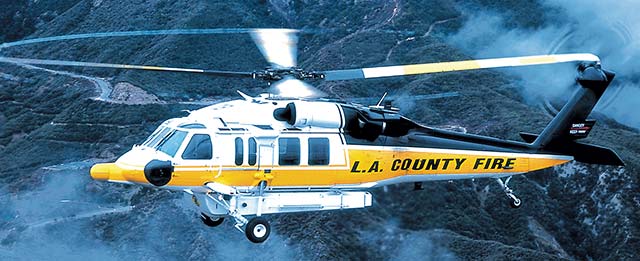Exploring the Abilities of the Sikorsky S 70: A Detailed Evaluation
Exploring the Abilities of the Sikorsky S 70: A Detailed Evaluation
Blog Article
Modernized Vertical Lift System With Advanced Composite Frameworks and Boosted Precaution
In the world of upright lift systems, a considerable change towards modernization has been observed, driven by the assimilation of innovative composite frameworks and enhanced safety and security steps. In discovering the convergence of technology and security in modern-day lift platforms, an engaging narrative emerges, showcasing the potential for transformative improvements that cater to the ever-evolving requirements of industrial sectors.
Development of Vertical Lift Systems

The advancement of vertical lift platforms can be traced back to basic sheave systems and early elevator designs. Gradually, developments such as hydraulic systems, electrical motors, and progressed control devices have actually greatly enhanced the performance and safety and security of these platforms. Manufacturers have actually also focused on improving the security, reach, and load-bearing capacities of upright lift platforms to satisfy the varied needs of different markets.
Moreover, the combination of clever innovations like sensors, IoT connectivity, and automation features has actually better changed the capacities of modern vertical lift platforms. These technical improvements not just boost functional performance however also make sure enhanced safety standards for employees making use of these systems at different heights. The continuous development of vertical lift platforms underscores their crucial duty in improving upright mobility across industries.
Assimilation of Advanced Composite Structures

Furthermore, the usage of innovative composite products allows for more complicated and optimized structural designs, allowing designers to tailor the platform's buildings to meet certain efficiency needs. In general, the incorporation of sophisticated composite structures in modern vertical lift platforms stands for a considerable development in aerospace technology, leading to much more reliable, reliable, and more secure airborne transportation systems.
Boosted Safety And Security Actions Implementation
Carrying out enhanced security procedures is vital in making certain the optimal performance and reliability of modern-day upright lift systems. These procedures encompass a variety of approaches intended at mitigating dangers and improving overall security criteria. One essential facet of improved safety actions is the combination of advanced sensor innovations to check different criteria in real-time. By using sensors for functions such as structural health surveillance, tons monitoring, and environmental picking up, prospective threats can be identified early, permitting positive upkeep and corrective actions.

Market Applications and Benefits
With advancements in modern technology and engineering, modernized upright lift platforms have actually discovered varied applications across various markets, providing considerable advantages in performance and productivity. The construction industry benefits from upright lift systems by allowing employees to access raised areas safely and efficiently, improving overall job timelines.
In addition, upright lift systems play an essential function in the repair and maintenance of framework such as bridges, high-voltage line, and buildings, allowing service technicians to reach hard to reach areas with simplicity (sikorsky s 70). The aeronautics sector likewise leverages these systems for airplane maintenance and assembly tasks, enhancing operations effectiveness and making certain employee safety at heights. Generally, the extensive fostering of modernized vertical lift systems across sectors highlights their convenience and the significant improvements they bring to different procedures
Future Trends in Lift System Technology
Including innovative automation and intelligent features, lift system technology is positioned to reinvent vertical transportation systems in the future. One vital trend is the combination of Web of Things (IoT) modern technology, allowing lift systems to communicate real-time data for predictive maintenance, maximizing performance, and enhancing safety. Expert system and her latest blog artificial intelligence algorithms are likewise being integrated to analyze patterns, predict prospective problems, and boost performance. The usage of innovative products such as carbon fiber compounds is on the surge, supplying raised durability and toughness while reducing general weight. Improved security actions, consisting of biometric verification and emergency response systems, are coming to be basic features to ensure passenger safety. Furthermore, adjustable setups and modular layouts are gaining appeal, enabling for greater adaptability to various settings and demands. As lift system innovation remains to progress, these trends are established to form the future of upright transport, making it a lot more reliable, secure, and straightforward.
Conclusion
Finally, the modernized vertical lift system showcases the advancement of innovation in the market. By integrating sophisticated composite structures and enhanced precaution, this platform provides increased efficiency and safety and security for numerous applications. The industry can profit substantially from these innovations, and future fads in lift system modern technology are likely to proceed boosting upon these innovations for even better success and effectiveness.
In the world of upright lift systems, a significant shift towards innovation has been observed, driven by the combination of sophisticated composite structures and enhanced safety measures. The continual development of upright lift platforms emphasizes their important role in boosting vertical flexibility across sectors.

The incorporation of innovative composite structures in modern-day vertical lift platforms has dramatically boosted their helpful hints structural stability and efficiency capabilities. By integrating these sophisticated composites into the layout and building of vertical lift platforms, suppliers can lower overall weight, boost load-carrying ability, and improve the system's sturdiness and long life.
Executing boosted security procedures is crucial in ensuring the optimal performance and reliability of contemporary upright lift systems.
Report this page